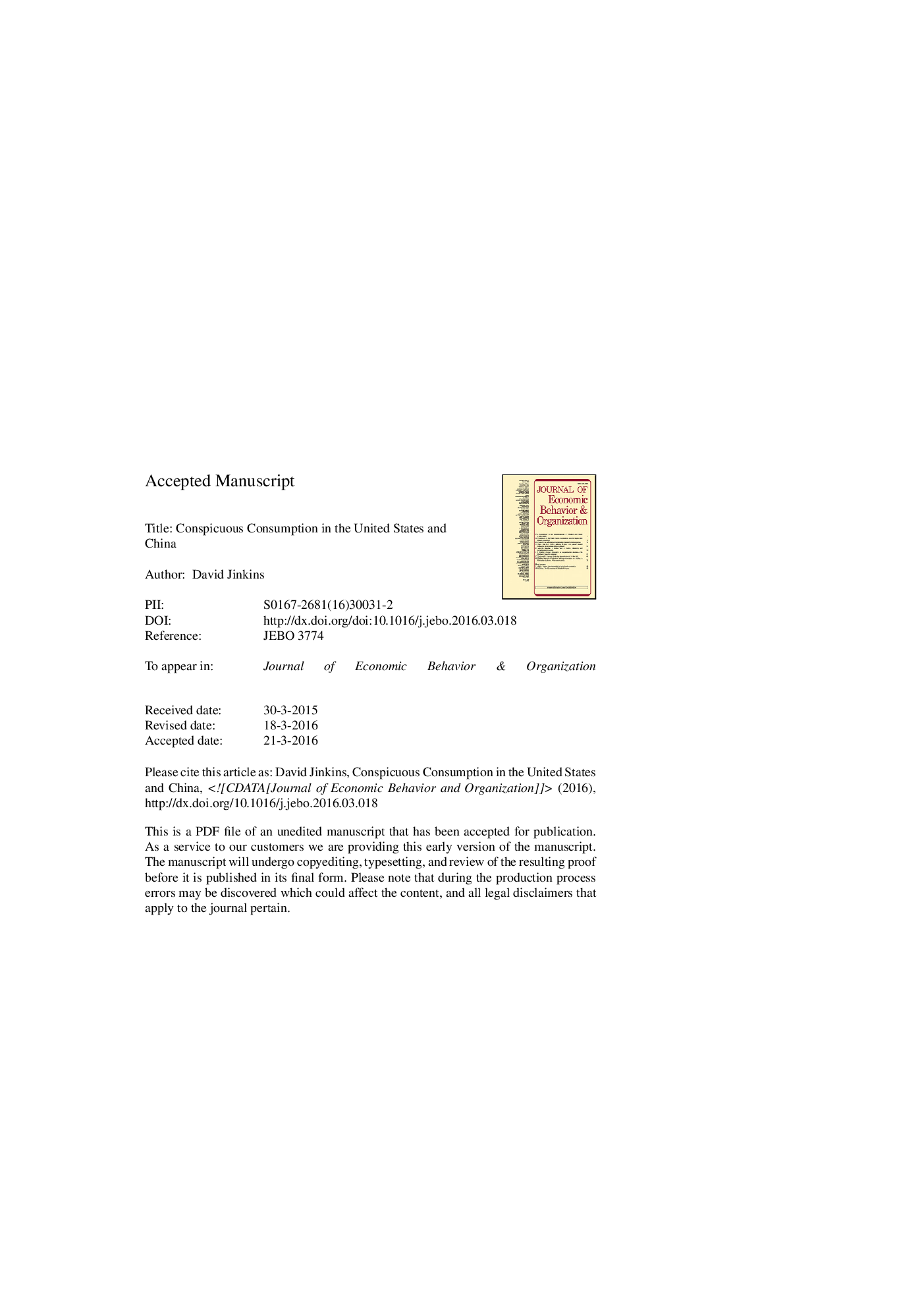| Article ID | Journal | Published Year | Pages | File Type |
|---|---|---|---|---|
| 7242825 | Journal of Economic Behavior & Organization | 2016 | 35 Pages |
Abstract
How do differences in the motive for conspicuous consumption in the United States and China affect the incidence of taxes in those countries? In this paper I develop a model of conspicuous consumption in which a consumer cares not only about the direct utility she receives from consumption, but also about the way her consumption pattern affects her peer group's belief about her well-being. Estimating the model on American and Chinese data, I find that a Chinese consumer cares 20% more than an American consumer about peer beliefs. I use the estimated model in several experiments related to tax incidence. I find that the 1990-2002 American luxury tax on automobiles led to widespread but small welfare gains, and that the stronger Chinese motive for conspicuous consumption leads to fewer households harmed and larger median welfare gains from a 10% tobacco excise tax.
Keywords
Related Topics
Social Sciences and Humanities
Economics, Econometrics and Finance
Economics and Econometrics
Authors
David Jinkins,
